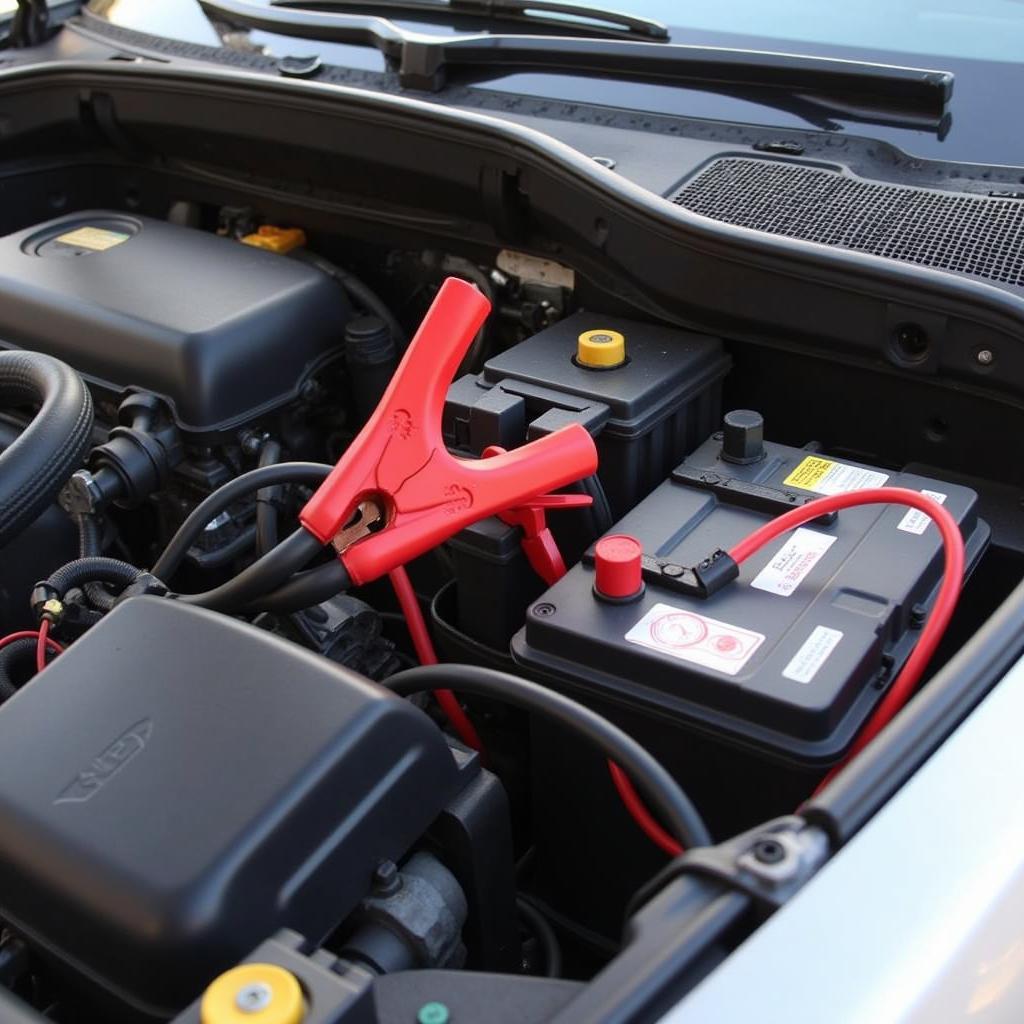A brake light warning on your dashboard can be a minor annoyance or a sign of a serious problem. Understanding what triggers this warning light and how to address it is crucial for your safety and the longevity of your vehicle. This article will explore the common causes of a brake light warning, provide troubleshooting steps, and offer preventative measures to keep your brakes in optimal condition. Let’s dive in.
Decoding Your Dashboard: Why is My Brake Light On?
Several issues can trigger the brake light warning on your dashboard. From a simple burnt-out bulb to more complex problems with the braking system, knowing the potential culprits is the first step towards a solution. Some of the most frequent reasons include:
- Burnt-out brake light bulbs: This is the most common and easiest to fix.
- Low brake fluid: Brake fluid is essential for proper brake function. Low fluid can indicate a leak or worn brake pads.
- Faulty brake light switch: This switch activates the brake lights when the brake pedal is pressed. A malfunctioning switch can prevent the lights from illuminating.
- Worn brake pads: Excessively worn brake pads can trigger a warning light, indicating they need replacement.
- Issues with the ABS (Anti-lock Braking System): A problem with the ABS can trigger a separate warning light, but sometimes it can also affect the brake light warning.
 Brake Light Warning on Car Dashboard
Brake Light Warning on Car Dashboard
Troubleshooting the Brake Light Warning: A Step-by-Step Guide
If your brake light warning illuminates, follow these steps to diagnose and resolve the issue:
- Check your brake lights: Have someone press the brake pedal while you inspect all brake lights, including the high-mounted brake light.
- Inspect the brake fluid level: Locate the brake fluid reservoir and check the fluid level. If it’s low, add brake fluid of the correct type. Consult your owner’s manual for the recommended fluid type. dashboard warning lights brake offers more detailed information about brake related warnings.
- Check for brake fluid leaks: Look for signs of leakage around the brake lines, calipers, and master cylinder. If you find a leak, seek professional help immediately.
- Inspect the brake pads: Check the thickness of the brake pads. If they are worn thin, replace them.
- Test the brake light switch: If the bulbs and fluid levels are fine, the brake light switch might be faulty. You can test this with a multimeter or have a mechanic check it.
What if the Brake Light is Intermittent?
An intermittent brake light warning can be particularly tricky. This could indicate a loose connection, a failing brake light switch, or even a problem with the wiring. anti lock brake dashboard warning light might be helpful if you suspect an issue with your ABS.
John Smith, a certified automotive technician with over 20 years of experience, advises, “Intermittent issues are often the hardest to diagnose. Don’t ignore them. A thorough inspection by a qualified mechanic is essential to pinpoint the root cause and prevent potential safety hazards.”
Preventive Measures: Keeping Your Brakes in Top Shape
Regular maintenance can prevent many brake-related issues. Here are some preventative measures to consider:
- Regular brake inspections: Have your brakes inspected at least once a year or as recommended by your vehicle manufacturer.
- Brake fluid flushes: Brake fluid absorbs moisture over time, which can reduce its effectiveness. Flush your brake fluid according to your vehicle’s maintenance schedule.
- Timely brake pad replacement: Don’t wait until your brake pads are completely worn out to replace them.
Conclusion: Addressing Your Brake Light Warning
A brake light warning on your dashboard should never be ignored. By understanding the potential causes and following the troubleshooting steps outlined above, you can address the issue promptly and ensure your safety on the road. Remember, maintaining your brakes is crucial for safe driving. If you’re unsure about any aspect of brake repair, consult a qualified mechanic. dashboard brake warning light symbol can help you identify the specific warning symbol you are seeing. Don’t delay in addressing this important safety concern.
FAQs
- What does a flashing brake light warning mean? A flashing brake light warning can indicate a more serious issue with the ABS system. Seek professional help immediately.
- Can I drive with the brake light on? While you might be able to drive, it’s not recommended. The warning light indicates a potential problem with your braking system, which could compromise your safety. 2000 honda accord dashboard brake lamp warning light offers specific information for Honda Accord owners.
- How much does it cost to fix a brake light warning? The cost varies depending on the cause. Replacing a bulb is inexpensive, but repairing a major brake component can be costly. how to diconnect abs brake warning light on dashboard 04astro provides guidance for disconnecting the ABS warning light on a specific vehicle model.
- How can I prevent my brake light from coming on? Regular maintenance and inspections are the best way to prevent brake-related issues.
- Is it safe to add brake fluid myself? Yes, but ensure you use the correct type of brake fluid for your vehicle.
- What if my brake pedal feels spongy? A spongy brake pedal can indicate air in the brake lines or a problem with the master cylinder. Seek professional help.
- Can worn tires affect the brake light warning? While worn tires don’t directly trigger the brake light warning, they can negatively impact braking performance.


